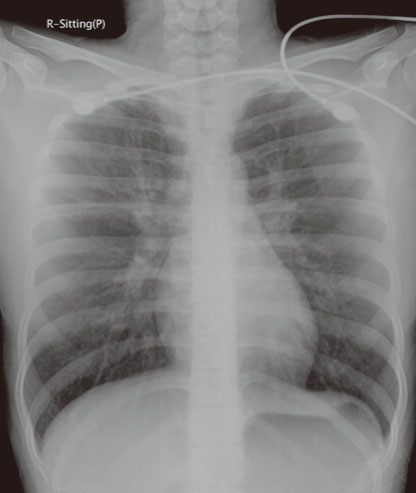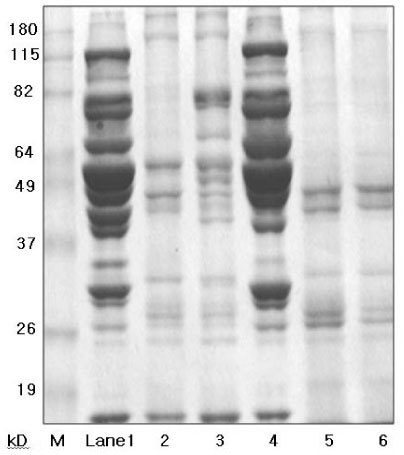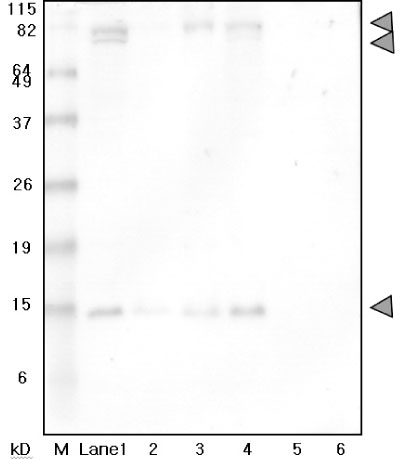Pediatr Allergy Respir Dis.
2012 Mar;22(1):116-121.
A Case Report of Food-Dependent Exercise-Induced Anaphylaxis in a Patient who was Sensitive to Pork
- Affiliations
-
- 1Department of Pediatrics, Myongi Hospital, Kwandong University College of Medicine, Goyang, Korea. hhleemd@kwandong.ac.kr
- 2Department of Pediatrics, Institute of Allergy, Yonsei University College of Medicine, Seoul, Korea.
Abstract
- Food-dependent exercise-induced anaphylaxis (FDEIA) is a specific variant of exercise-induced anaphylaxis that requires both vigorous physical activity and the ingestion of specific foods. In particular, it is rare occurrence for FDEIA to be associated with meat in Korea. A 15-year-old female had generalized urticaria, dyspnea, severe cough, headache, dizziness, and vomiting after singing and dancing for 1 hour and after ingesting grilled pork. Skin prick tests showed a strong positive reaction to pork, whereas the results of an oral food challenge and exercise provocation tests were negative. However, the exercise provocation test after pork ingestion showed a positive reaction manifested by generalized urticaria, cough, mild dyspnea, and a 23% decreased peak expiratory flow rate. Three allergens to pork (67 kDa, 90 kDa, and 15 kDa) reacted with the patient's serum on immunoglobulin E immunoblotting. We report a case of pork-dependent exercise-induced anaphylaxis in a patient who was sensitive to pork.
MeSH Terms
Figure
Reference
-
1. Burks AW, Sampson HA. Anaphylaxis and food allergy. Clin Rev Allergy Immunol. 1999. 17:339–360.
Article2. Kim MK, Lee KS, Kim MS. Food (wheat flour) dependent exercise-induced anaphylaxis in asthmatics: related with the amount of wheat flour and exercise. J Asthma Allergy Clin Immunol. 1999. 19:724–729.3. Jeon KW, Kim C, Kim YK, Kang MS, Bong JD, Ki SY, et al. A case of parsely dependent exercise-induced anaphylaxsis. J Asthma Allergy Clin Immunol. 1998. 18:728–732.4. Yang MS, Lee SH, Kim KM, Kwon HS, Kim DI, Park CH, et al. A case report of food-dependent exercise-induced anaphylaxis to apples. Korean J Asthma Allergy Clin Immunol. 2006. 26:242–245.5. Hong SJ, Ahn KM, Lee SY, Kim KE. The prevalences of asthma and allergic diseases in Korean children. Korean J Pediatr. 2008. 51:343–350.
Article6. Oh JW, Pyun BY, Choung JT, Ahn KM, Kim CH, Song SW, et al. Epidemiological change of atopic dermatitis and food allergy in school-aged children in Korea between 1995 and 2000. J Korean Med Sci. 2004. 19:716–723.
Article7. Jeong BY, Kim DY, Fan JP, Chung HC, Han GD. Studies on prevalence of meat allergy and potential beef allergens. J Korean Soc Food Sci Anim Resour. 2009. 29:151–156.
Article8. Son DY, Yoon KR, Lee SI. Study of the most common allergic foods in Korea. Korean J Food Sci Technol. 2002. 34:885–888.9. Besler M, Steinhart H, Paschke A. Stability of food allergens and allergenicity of processed foods. J Chromatogr B Biomed Sci Appl. 2001. 756:207–228.
Article10. Llátser R, Polo F, De La Hoz F, Guillaumet B. Alimentary allergy to pork. Crossreactivity among pork kidney and pork and lamb gut. Clin Exp Allergy. 1998. 28:1021–1025.
Article11. Aihara Y, Takahashi Y, Kotoyori T, Mitsuda T, Ito R, Aihara M, et al. Frequency of food-dependent, exercise-induced anaphylaxis in Japanese junior-high-school students. J Allergy Clin Immunol. 2001. 108:1035–1039.
Article12. McClean SP, Arreaza EE, Lett-Brown MA, Grant JA. Refractory cholinergic urticaria successfully treated with ketotifen. J Allergy Clin Immunol. 1989. 83:738–741.
Article13. Barg W, Medrala W, Wolanczyk-Medrala A. Exercise-induced anaphylaxis: an update on diagnosis and treatment. Curr Allergy Asthma Rep. 2011. 11:45–51.
Article14. Yang PC, Berin MC, Yu LC, Conrad DH, Perdue MH. Enhanced intestinal transepithelial antigen transport in allergic rats is mediated by IgE and CD23 (FcepsilonRII). J Clin Invest. 2000. 106:879–886.
Article15. Lemon-Mulé H, Nowak-Wegrzyn A, Berin C, Knight AK. Pathophysiology of food-induced anaphylaxis. Curr Allergy Asthma Rep. 2008. 8:201–208.
Article16. Cooper DM, Radom-Aizik S, Schwindt C, Zaldivar F Jr. Dangerous exercise: lessons learned from dysregulated inflammatory responses to physical activity. J Appl Physiol. 2007. 103:700–709.
Article17. Sampson HA, Leung DY. Kliegman RM, Stanton BF, St. Geme JW, Schor NF, Behrman RE, editors. Anaphylaxis. Nelson Textbook of Pediatrics. 2011. 19th ed. Philadelphia: Saunders;817–819.
Article
- Full Text Links
- Actions
-
Cited
- CITED
-
- Close
- Share
- Similar articles
-
- Wheat-dependent, Exercise-induced Anaphylaxis: A Successful Case of Prevention with Ketotifen
- A Case of Wheat-Dependent Exercise-Induced Anaphylaxis
- Food allergies and food-induced anaphylaxis: role of cofactors
- A Case of Squash-dependent Exercise-induced Anaphylaxis
- A case of food-dependent exercise-induced anaphylaxis developed only in winter




